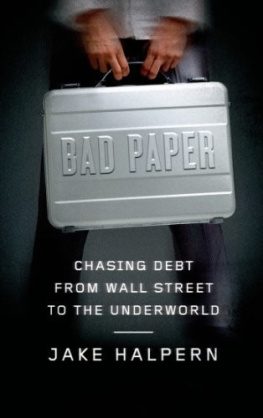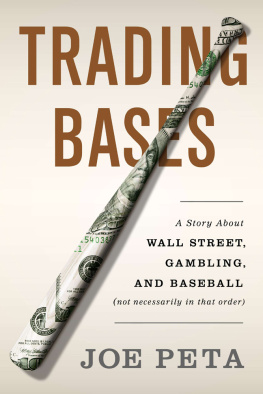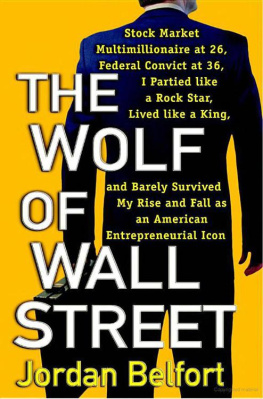Jake Halpern - Bad Paper: Chasing Debt From Wall Street to the Underworld
Here you can read online Jake Halpern - Bad Paper: Chasing Debt From Wall Street to the Underworld full text of the book (entire story) in english for free. Download pdf and epub, get meaning, cover and reviews about this ebook. year: 0, genre: Science. Description of the work, (preface) as well as reviews are available. Best literature library LitArk.com created for fans of good reading and offers a wide selection of genres:
Romance novel
Science fiction
Adventure
Detective
Science
History
Home and family
Prose
Art
Politics
Computer
Non-fiction
Religion
Business
Children
Humor
Choose a favorite category and find really read worthwhile books. Enjoy immersion in the world of imagination, feel the emotions of the characters or learn something new for yourself, make an fascinating discovery.
- Book:Bad Paper: Chasing Debt From Wall Street to the Underworld
- Author:
- Genre:
- Year:0
- Rating:4 / 5
- Favourites:Add to favourites
- Your mark:
- 80
- 1
- 2
- 3
- 4
- 5
Bad Paper: Chasing Debt From Wall Street to the Underworld: summary, description and annotation
We offer to read an annotation, description, summary or preface (depends on what the author of the book "Bad Paper: Chasing Debt From Wall Street to the Underworld" wrote himself). If you haven't found the necessary information about the book — write in the comments, we will try to find it.
Jake Halpern: author's other books
Who wrote Bad Paper: Chasing Debt From Wall Street to the Underworld? Find out the surname, the name of the author of the book and a list of all author's works by series.
Bad Paper: Chasing Debt From Wall Street to the Underworld — read online for free the complete book (whole text) full work
Below is the text of the book, divided by pages. System saving the place of the last page read, allows you to conveniently read the book "Bad Paper: Chasing Debt From Wall Street to the Underworld" online for free, without having to search again every time where you left off. Put a bookmark, and you can go to the page where you finished reading at any time.
Font size:
Interval:
Bookmark:

To Stephen Halpernconsummate father and friend
CONTENTS
Be kind, for everyone you meet is engaged in a great struggle.
AUTHOR UNKNOWN
INTRODUCTION
One evening in October 2009, a former banking executive named Aaron Siegel waited impatiently in the master bedroom of a house in the Allentown neighborhood of Buffalo, New York. As he stared at the rooms old fireplace and then out the window to the sleepy street beyond, he tried not to think about his investors and the $14 million that they had entrusted to him. Aaron was no stranger to money. He had grown up in one of the citys wealthiest and most famous families. His father, Herb Siegel, was a legendary playboy and the founder of a hugely profitable personal-injury law firm. During his late teenage years, Aaron had essentially lived unchaperoned in a sprawling, hundred-year-old mansion. His sister, Shana, recalls the parties that she hostedlavish affairs with plenty of champagneand how their private school classmates would often spend the night, as if the place were a clubhouse for the young and privileged.
On this particular day in October, Aaron wondered how exactly he had gotten into his current predicament. His career had started with such promise. He had earned his M.B.A. from the highly regarded Simon Graduate School of Business at the University of Rochester. He had taken a job at HSBC and completed the banks executive training course in London. By all indications, he was well on his way to a very respectable career in the financial world. Aaron was smart, hardworking, and ambitious. All he had to do was keep moving up the corporate ladder; instead, he had decided to take a gamble.
In the summer of 2008, Aaron launched his own private equity fund in an elegant old home at 448 Franklin Street in Buffalo. He claimed the master bedroom for his office. His company, which he dubbed Franklin Asset Management, focused on distressed consumer debt; basically, he was interested in buying up the right to collect unpaid credit-card bills. There is a vast market for unpaid consumer debtsnot just credit-card debts but auto loans, medical loans, gym fees, payday loans, overdue cell phone tabs, old utility bills, even delinquent book club accounts. Indeed, American consumers owe a grand total of $11.28 trillion, of which roughly $831 billion is delinquent or unpaid. Some 30 million consumers are currently being hounded over at least one loan; and each of these debtors owes, on average, $1,458.
Many consumers assume that when they receive a call about an unpaid debtfrom Bank of America, or Verizon, or Aarons Furniture Rentalthey are actually speaking with an official from that company. Not so. The original creditor has often written off that debt as a loss years before and sold it at a fraction of its value to speculators who hope to collect on it and turn a tidy profit. Much has been said and written about the subprime mortgage crisis and how risky loans were issued, bundled, spliced, diced, and sold. Far less has been written about the enormous quantity of consumer debt that is bought, bundled, and sold each year; those who trade in such debt call it paper and they typically buy it and sell it for pennies on the dollar.
That was Aarons business. If he could buy debts with face values of $1,500 for $15and if his agencies could collect just 10 percent of what was owedhe could make a fortune. What he needed was capital, so he used his connections from his school days, and from the banking world, to court eight investors. In the ensuing year and a half, he would use their money to buy $1.5 billion worth of bad debts. This would be his trial run. If all went smoothly, he would soon launch another fund, with even more money in it.
But all did not go smoothly.
Some of the deals that Aaron made were hugely profitable, while others proved more troublesome. As he soon discovered, after creditors sell off unpaid debts, those debts enter a financial netherworld where strange things can happen. A gamut of players including publicly traded companies, hedge fund operators, professional debt collectors, street hustlers, ex-cons, and lawyers all work together, and against one another, to recoup every penny on every dollar. In this often-lawless marketplace, large portfolios of debtusually in the form of spreadsheets holding debtor names, contact information, and balancesare bought, sold, and sometimes simply stolen.
Stolen.
This was the word that was foremost in Aarons mind on that October afternoon in 2009. He had strong reason to believe that a portfolio of paperhis paperhad been stolen and was now being worked by one of the many small collection agencies on the impoverished and crime-ridden East Side of Buffalo. Using his spreadsheets, this agency was now calling his debtors and collecting on debt that was rightfully his. This was not a problem that Aaron was used to handling. There had been no classes at the Simon Graduate School of Business on how to apprehend thieves who had appropriated your assets. He could, of course, call the police or the state attorney general; but, by the time that they intervened, the paper would be wrung dry, worthless. His problem was more fundamental, more pressing. At this point, he didnt know exactly how many files had been stolen, but he knew that he needed immediate intervention.
Fortunately, Aaron had someone to call.
His name was Brandon Wilson. A former armed robber, Brandon had spent roughly ten years in prison, and now liked to boast that he made far more in debt collections than he ever did robbing banks. Brandon worked as Aarons most valued debt broker, buying and selling portfolios on Aarons behalf. He also served as his emissary to the collections industrys many unsavory precincts. And at this very momentas Aaron waited impatiently in the old, wood-paneled master bedroom at 448 Franklin StreetBrandon was en route to Buffalo with a car full of his associates, mainly ex-cons, some of them armed and all of them determined to help fix the problem. Their goal was simple: rescue the stolen accounts.
The following pages tell the story of Aaron and Brandons unlikely partnership and track the stolen portfolio of debt they set out to retrieve. To its handlers, that portfolio was just a spreadsheet containing the names and social security numbers of debtors and the amounts they owed; but that same spreadsheet was also a collection of stories about Americans whose financial lives had unraveled. This book chronicles some of those lives and simultaneously explores a thriving industry that buys and sells old loans like precious jewels. In many blighted neighborhoods, in Buffalo and elsewhere, small shops that collect debtoften by unsavory meansare sources of employment and engines of mobility for people who, otherwise, would be hard-pressed to find work. Across the country, a much larger industry traffics in old debts, frequently using dubious methods to pressure debtors into paying up, even on debts they have already settled or for which they are no longer liable.
Ever since 2006, the Federal Trade Commission (FTC) has ranked debt collection as its second-biggest source of complaints from consumers, following only identity theft. It has not done much, however, to clean things up. In 2009, it brought just one enforcement action against a company for collections violations; since then, it has done little more. Banks, creditors, and regulators are at last starting to crack down on certain conspicuous abuses but the system as a whole remains dysfunctional and largely unsupervised. The newly created Consumer Financial Protection Bureau focuses on policing 175 of the nations largest collectors, while thousands of smaller companies escape its scrutiny. Debt collection remains, in many regards, a shadowy corner of the economywhere financial misfortune is bought, sold, and exploited. As sensational as this may sound, it is exactly what one might expect in a country that is driven by profit, mired in debt, and not fully able or willing to tame the marketplace that is created when these two forces meet.
Next pageFont size:
Interval:
Bookmark:
Similar books «Bad Paper: Chasing Debt From Wall Street to the Underworld»
Look at similar books to Bad Paper: Chasing Debt From Wall Street to the Underworld. We have selected literature similar in name and meaning in the hope of providing readers with more options to find new, interesting, not yet read works.
Discussion, reviews of the book Bad Paper: Chasing Debt From Wall Street to the Underworld and just readers' own opinions. Leave your comments, write what you think about the work, its meaning or the main characters. Specify what exactly you liked and what you didn't like, and why you think so.









